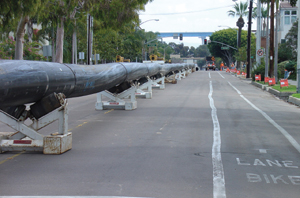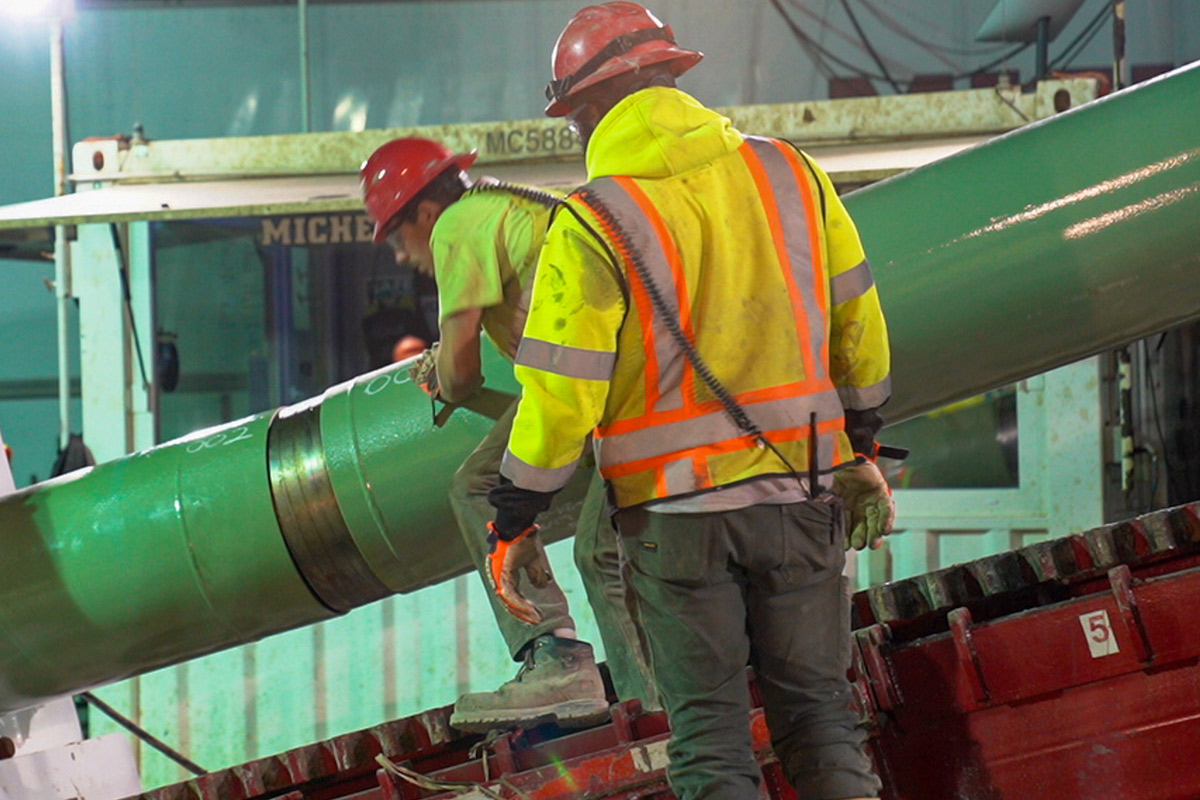HDD Intersect
June 1, 2008
 On Nov. 16, 2006, Michels Directional Crossings, a division of Michels Corp., was awarded the Coronado Transbay Sanitary Sewer Force Main project for the City of Coronado, Calif.
On Nov. 16, 2006, Michels Directional Crossings, a division of Michels Corp., was awarded the Coronado Transbay Sanitary Sewer Force Main project for the City of Coronado, Calif. Construction of the new sewer was set to start in December 2006 and finish by May 2007.
Michels’ project scope entailed installation of approximately 3,150 lf of 30-in. OD SDR-9 HDPE pipe by the innovative directional drill hole-intersect method. Additional trenching and tie-in work for the remainder of the project was performed by Michels’ subcontractor, Ortiz Construction.
All of Coronado’s sewage, including that from the North Island Naval Air Station and the Naval Amphibious Base, is collected and sent to treatment in San Diego via this pipe. This existing sewer line, installed in the early 1970s, transports approximately 3.5 million gals of raw sewage beneath the San Diego Bay to a tie-in point with the San Diego Metro Wastewater System on a daily basis.
In crossing the San Diego Bay, Michels and its subcontractors had to work within not one but two highly congested urban settings while dealing with heavy traffic; both pedestrian and vehicular. Noise curtain enclosures were erected around the perimeter of both work sites and used as visual and sound suppressants.
On the San Diego Side of the Crossing
The proposed drill rig setup area was located in Embarcadero Park North, near Seaport Village in a parking lot adjacent to the Bay and Marina. With its scenic views of floral and fauna and numerous shops and eateries, this 14-acre waterfront shopping attraction becomes inundated with tourists and health conscious pedestrians. The proposed construction area had to be cornered off but accessibility maintained to the bayside park and its many attractions.
On the Coronado Side of Crossing
A duck pond located next to a strip mall was drained and demolished to be used with a grass area adjacent to the lift station providing a footprint having sufficient room for staging a second drill rig with ancillary equipment. However, due to the proximity of nearby residents and businesses, a noise curtain was erected 14-ft high around the entire perimeter of the site — then extensive noise modeling was conducted based on percussion ramming of large diameter steel casing, anticipating this as being one of the loudest construction operations.
Once decibel readings were recorded and the specifications of the noise wall were inputted into the noise modeling software, decibel levels fell within allowable limits and approval was granted for Michels to begin drilling operations.
A TT Technologies Grundo-Ram Taurus was used to install approximately 200 ft of 48-in. steel conductor casing to act as ground stabilization and for preservation of environmentally sensitive eel-grass beds near the shoreline.
Eelgrass bed surveys and monitoring were conducted prior to and during drilling operations. Coordination of these in-water activities became critical, as found out by the subcontracted divers; upon finishing one of their first video/monitoring runs they were greeted at the surface by military personnel in a boat garnering M-16s.
From that point on, the importance of an open line of communication with the military and the Port of San Diego was apparent and they were kept abreast of Michels’ activities.
Coordinating the HDPE Pipe String-Out & Pullback Operation
Every stage of the HDD operation required careful coordination but this was most apparent during the HDPE pipe string-out and pullback operation. It was determined that the best location to stage the sections of pipe from a logistical and economical standpoint was on the Coronado side of the crossing down First Street. This area provided the required space necessary to accommodate the manpower and equipment to string, fuse and support the 3,200-ft pipe string-out operation. However, the downside to this was the street being orientated perpendicular to the HDD alignment, thereby requiring some very innovative techniques to rope the large diameter pipe around a 90-degree corner while allowing minimal impact to traffic.
Communication Is Key
Access was maintained along city streets by elevating pipe over busy intersections. Accommodations were also made allowing access points to area residents.
Keys to completing this project successfully — precise coordination of each operation along with a clear line of communication between the residents, military personal and local businesses of Coronado.
Because this line traversed beneath two jurisidictional zones and a very active military port-of-call, multiple entities were involved. Michels Corp. would like to thank the Port of San Diego, City of San Diego and the City of Coronado for their cooperation and dedication to the project.
Lisa Sanders is a marketing communications specialist for Michels Corp., Brownsville, Wis.




